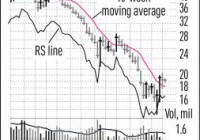Why LinkedIn Stock Is Crashing And Analysts Are Slashing Targets
Analysts slashed their stock price forecasts on LinkedIn ( LNKD ) following a fourth-quarter earnings report late Thursday that included a 2016 outlook far below expectations. Even though LinkedIn’s fourth-quarter earnings report soundly beat expectations, the stock closed down a whopping 44% at 108.38, striking a three-year low in massive trade in the stock market today . Perhaps the most startling announcement in the Q4 earnings report was that LinkedIn will shutter a business called Lead Accelerator. That decision cut the company’s 2016 revenue forecast by $50 million. Lead Accelerator was created out of LinkedIn’s $175 million acquisition of Bizo in July 2014. The technology focuses on boosting the ability of marketers to target prospects and had been considered a high-growth opportunity. LinkedIn said the manpower needed to boost Lead Accelerator was not worth the time and effort, saying it was “a higher-than-anticipated demand on resources.” The remaining assets from the Bizo acquisition will be integrated into the company’s Sponsored Content unit, which is part of the larger Marketing Solutions Group. With the change, LinkedIn said it was willing to accept some short-term pain for long-term gain, but it still raised concerns. “The exit from Bizo leaves our confidence shaken about the pace of new monetization of LinkedIn’s unique data set,” wrote Pacific Crest analyst Evan Wilson, who slashed his price target to 190 from 280. “We think LinkedIn is making a gigantic mistake stepping back on investment in its ad network. We would understand if the ad network had grave issues with privacy or if there was no demand from advertisers, but we can see from Alphabet ( GOOGL ), Facebook ( FB ) and Amazon ( AMZN ) that this is not the case,” Wilson wrote. For the year, LinkedIn expects revenue in a range between $3.6 billion and $3.65 billion. The consensus among analysts is $3.9 billion. It expects EPS in the range of $3.05-$3.20 per share, below the consensus of $3.67. LinkedIn provided three reasons for its weaker-than-expected earnings forecast for 2016. In addition to the fading out of Lead Accelerator, it cited a slowdown in premium display advertising as it goes through a shift in strategy. That clipped another $50 million off the revenue forecast. The third reason for weakness is currency headwinds in emerging markets, due to “current global economic conditions.” Some analysts wondered if LinkedIn’s problems go deeper than that. “We do not believe that this alone can account for all of the downside to guidance, implying to us material deceleration in the core business,” wrote RBC Capital Markets analyst Mark Mahaney, who cut his price target on LinkedIn to 156 from 300. LinkedIn has three revenue streams. The largest is Talent Solutions, used by companies to recruit employees and for training and education. Revenue rose 45% to $535 million. Marketing Solutions, which sells ads, rose 20% to $183 million. Premium Subscriptions, fees paid by users for enhanced services, increased 19% to $144 million. Another potential red flag is that page views among all LinkedIn users showed a deceleration in growth. Credit Suisse analyst Stephen Ju cut his price target on LinkedIn to 230 from 300. Cowen & Co. analyst John Blackledge cut his price target to 140 from 272.
